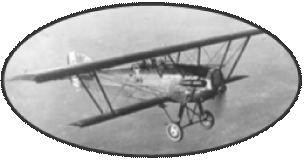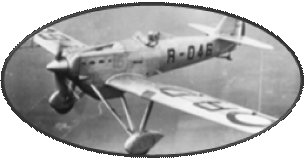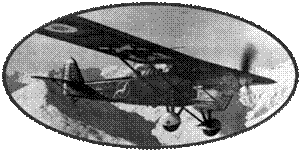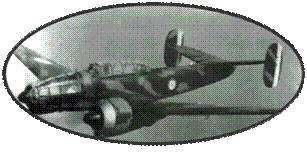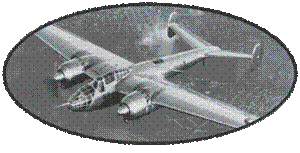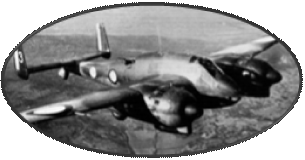In 1934, the Technical
Services launched a program for a C3 three-seater fighter, intended
for interception, escort, or command to hunt. Breguet responds
with his Br690, a metallic three-seater aircraft with cantilever
wing. It is powered by two Hispano-Suiza 14AB from 670hp to takeoff.
Its armament consists of two 20mm cannons in the nose and a rear-mounted
machine gun. The chosen engines being reserved in priority to
the Potez 630 finally retained by the program C3, it is only on
March 23, 1938 that he will make his first flight. It proved to
be more powerful than the Potez 630 ...
Breguet then presents
his aircraft as a two-seat assault bomber (AB2) which becomes
the Breguet 691 AB2. He thus received a bomb bay for 400kg of
loads in place of the observer station. Its armament is modified
and one of the front cannons and replaced by a machine gun of
7.5mm while a rear fixed machine gun is added. The engine remains
that of the Br690, and the landing gear, weak point of the aircraft,
is modified. The first series plane flies on May 15, 1939, and
deliveries in units begin in October at GBA I / 54.
Very quickly, the Hispano
engines proved to be unreliable and were replaced by Rhone 14M
6/7 700 hp Gnome on take-off. The Br691 N ° 19 became the first
Br693 AB2 and made its first flight on October 25, 1939. This
new version replaced the Br691 on assembly lines from No. 79 which
flew on March 22, 1940. Only 78 Br 691 were therefore built on
the 200 commanded.
The Breguet Br693 differs
from the Br691 by the disappearance of the tail wheel casing and
by its more aerodynamic engine hoods: the Gnome Rhône, less large,
have indeed allowed to reduce the size of the engine hoods. These
are equipped with cooling flaps and flame arrestors. During the
manufacture, a second version appears on which the hoods evolve.
Shorter, they lose their flame guards and flaps. The exhaust is
made via flat pipes with propulsive effect, which allows to gain
a few kilometers hours.
In the face of the shortage
of engines, the Ministry of Air is looking for foreign engine
manufacturers, particularly in the United States. Pratt & Whitney
SB4G TWIN WASP were mounted on the Breguet 690 n ° 01 which became
the Breguet 695. The assembly of these engines required some modifications.
The new lighter engines, however, are more bulky. Hoods thus become
wider and penalize a little the performances and the side vision.
The Breguet 695 made its first flight on 3 March 1940.
The first Breguets are
delivered in units from October 1939, and on 1 March 1940, 119
Breguet 691 and 693 are present in the various GBA.
Although the device is
well born, it is nevertheless perfectible. The main problem is
the fragility of the train. It is the cause of numerous accidents
and despite many modifications, the problem will never be completely
eradicated. On the Breguet 691, the Hispano-Suiza engines, which
are very fragile, require too much maintenance, which quickly
led to the Breguet 691's assignment to training roles. We can
also deplore the lack of adequate armor, a recurring problem on
French aircraft, but which is of great importance for an aircraft
that will have to face the formidable Flak on every mission.
The Breguets are engaged
for the first time on May 12, 1940 in the region of Maastricht.
The attack was murderous with 4 persons killed and eleven prisoners
... The French crews discovered Flak and limits of the attack
during flight shaving It is a whole doctrine that is being challenged.
Devices that escape the Flak are assaulted by the BF109 and losses
will be numerous throughout the Campaign De France: out of 211
Breguets delivered, 119 were lost including 68 in combat.
After Armisitice, only
two out of five GBA are kept in the Air Force of Vichy. In 1942,
the Breguets seized by the Germans and the Italians were scrapped
and the engines were recovered to equip the Henshel 129

